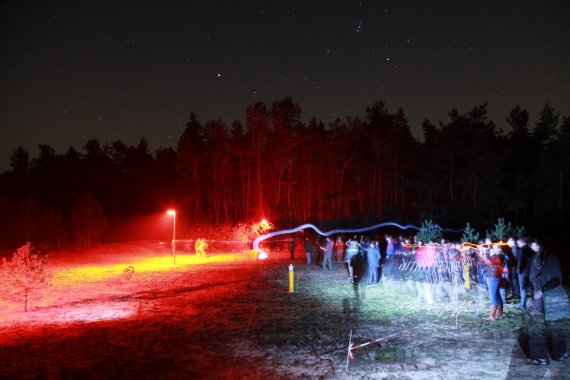Turning on the light – something which happens daily – took on a special meaning on Thursday evening in the heather fields in Kootwijk. With a flick of the switch, Elmar Veenendaal (Nature Conservation and Plant Ecology Group) and others kicked off a three year experiment into the effect of artificial light on nocturnal flora and fauna. Researchers from Wageningen UR and NIOO play a major role in this study.
Volunteers
The project is known as ‘Light on Nature’ (http://www.lichtopnatuur.org) and is funded by the technology foundation STW, Philips and the Dutch oil company NAM. The study will examine the effect of different colours of light on plants and animals. For example, is green light really less annoying or does this apply only to birds at sea? Many volunteers from nature organizations will participate in this project. They will keep close track of population changes in plants, animals and insects in the coming years.
Eight locations
Besides Kootwijk, the experiment will also be carried out on six locations in the Veluwe and one in Drenthe. These locations will be lighted up in the course of next week. Rows of green, red and white lampposts are situated within or beside nature areas, where it would normally be dark. The lamps will be switched on from sunset to sunrise. Soon, a second light experiment will be carried out near the campus, specifically to study the effect of light pollution on night butterflies.

